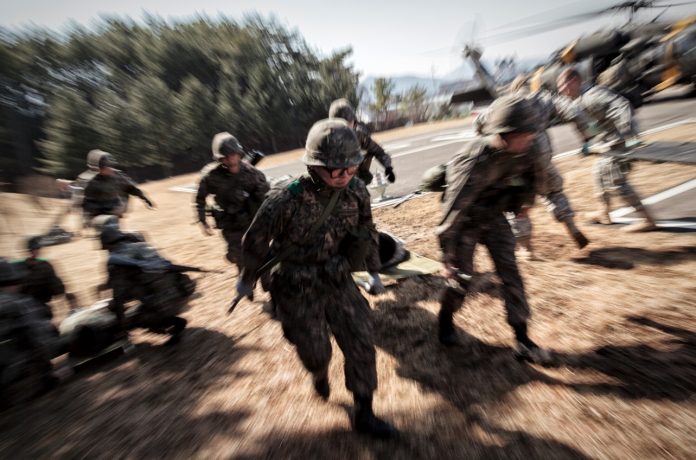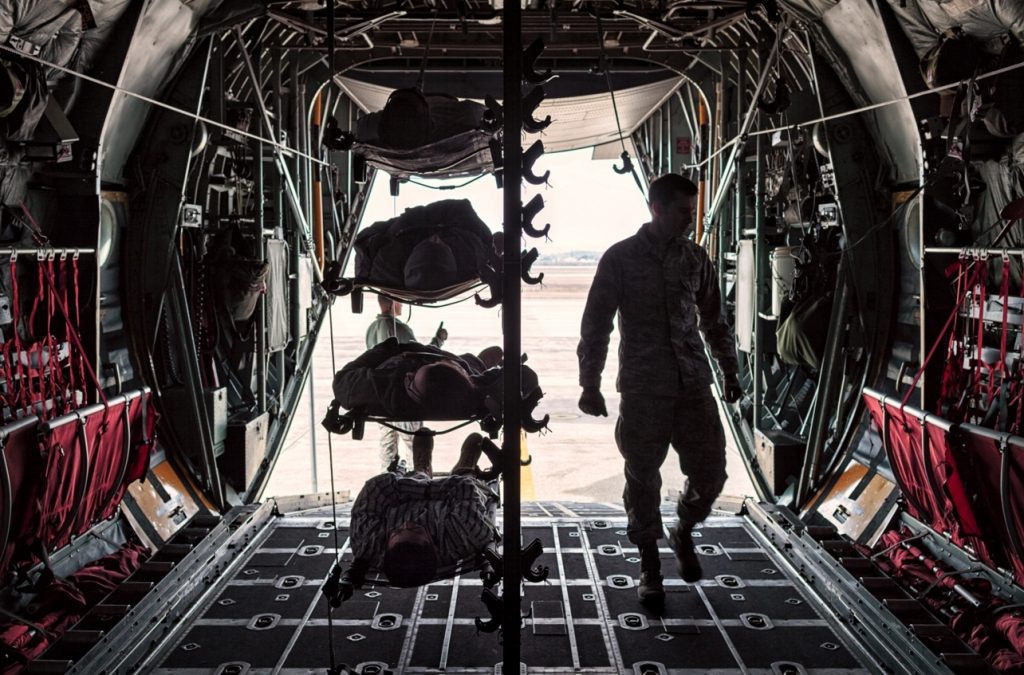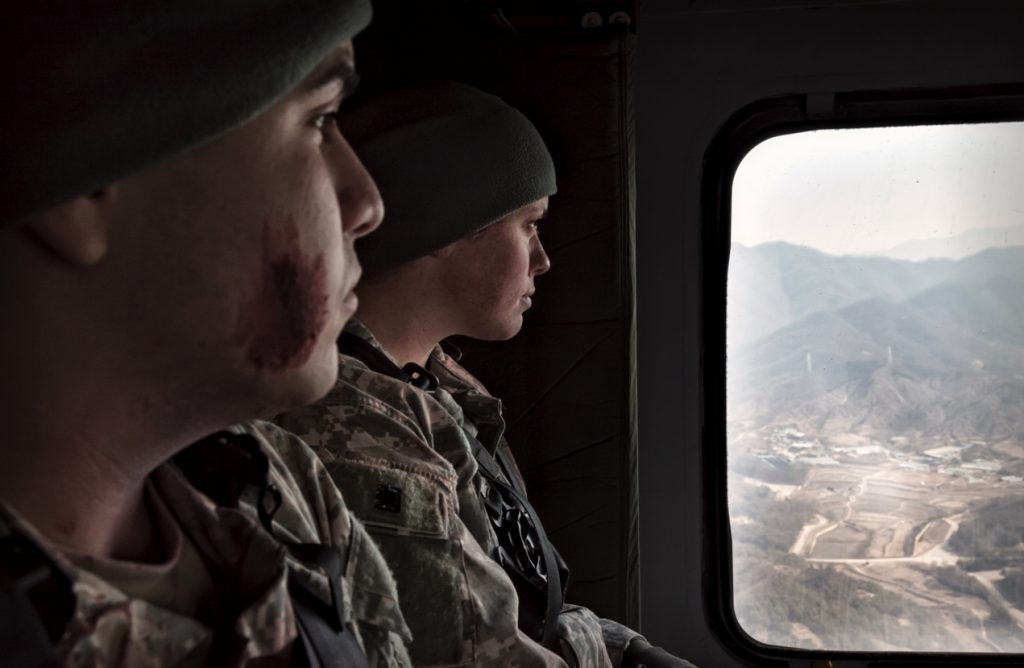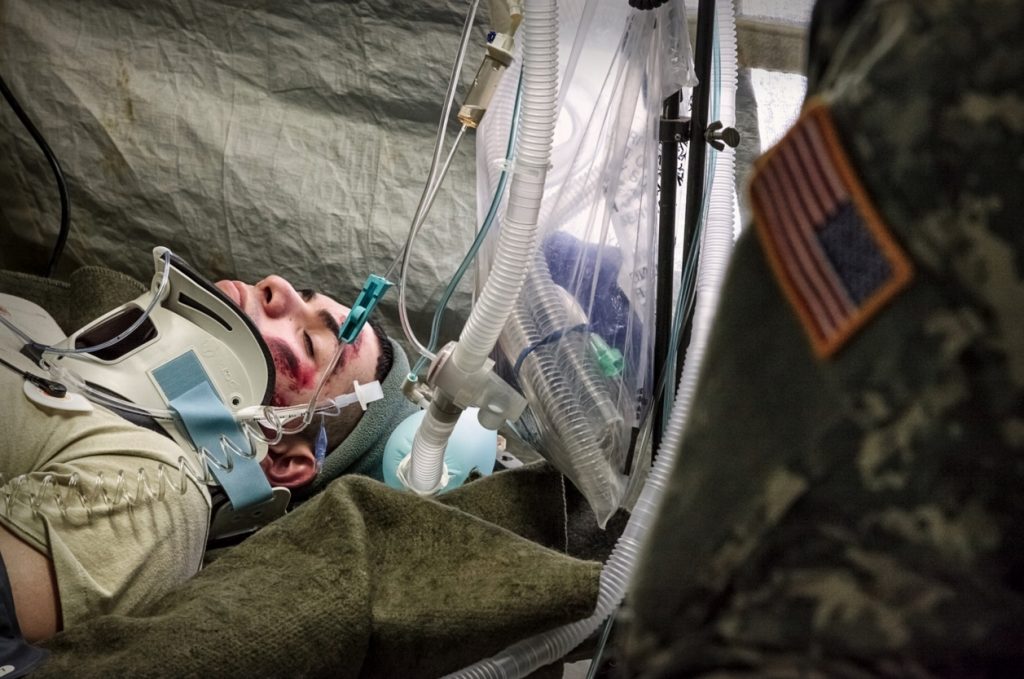
ILDONG, South Korea – The worst cases – those with limbs missing and severe burns – were put on Black Hawk helicopters to the field hospital, while the less urgent victims traveled by military ambulance, stacked on stretchers in the back.
First stop: the outside triage station, where one soldier groaned as medics cut off his fatigues to discover his organs hanging out of his stomach. (Really, they were condoms filled with Kool-Aid and cocoa, to make the liquid a bit lumpy.)
It wasn’t, obviously, a real battle scene – although the American and South Korean soldiers acted as though it was – but rather a two-day medical evacuation drill called Dragon Lift that ended Wednesday, part of joint spring military exercises.
They were simulating their response to an artillery attack from Kim Jong Un’s army, on the site of a South Korean military hospital eight miles from the border with North Korea and not far from Uijeongbu, the setting for the Korean War television series “M.A.S.H.”
Thirty American and South Korean soldiers in fake blood and ripped uniforms were taken from triage to the emergency room, where doctors and nurses drew blood (for real) from Spec. Kathleen Erwin, who had “internal bleeding,” and intubated (just pretend) Pvt. Matthew Calkins Camp, who had “laryngeal trauma.”
In the olive-green tents, there was even a decked-out operating theater, complete with surgeons and an anesthetist.
Once stabilized, the urgent cases were flown to the U.S. Air Force base at Osan and loaded on stretchers into the back of a Hercules – the top stretchers were hanging on hooks seven feet off the ground – for evacuation to Japan.
The U.S. military still has 28,500 troops in South Korea – a legacy of the Korean War, which left the peninsula physically and ideologically divided – and they operate under the constant refrain that they should be ready to “fight tonight.”
These kinds of exercises help the two militaries figure out how to work together, said Lt. Col. D.J. Kimbler, who was overseeing the field hospital. “It increases not only our readiness, but it increases the readiness of the alliance and makes us more ready to fight tonight here on the Korean Peninsula,” he said.
Twice a year, the American and South Korean militaries conduct joint exercises to prepare for a North Korean invasion or the sudden collapse of the regime.
But this year, the spring exercises are taking place at a particularly tense time: amid international condemnation of the North’s January nuclear test and February long-range rocket launch.
The exercises – which include computer simulations of surgical strikes against the North Korean leadership – have elicited an angry response from Pyongyang.
In the latest of its almost-daily denunciations, North Korea said Wednesday that its army was ready “to fully counter the nuclear war provocation by the U.S. and its followers.”
“All the operation groups of the revolutionary armed forces of the DPRK are fully ready to preempt merciless and annihilating strike at the enemies if they show even the slightest sign of provocation,” the Rodong Sinmun, the mouthpiece of the Workers’ Party, said in a commentary.




